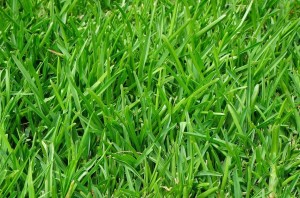5 Pros and Cons of Artificial Turf on Sports Fields
 Whether you’re a player, coach, groundskeeper, or simply a sports lover, it might be easy to look at the gorgeous greens of artificial turf and think that this surface is always, only the best option. To be sure, artificial turf is a great option for many applications, and if you’re considering a new surface for your playing field from a company like Bourget Bros. Building Materials, this option should certainly be in the running. To allow you to make an informed decision, however, here are a few pros and cons to think about when considering artificial turf.
Whether you’re a player, coach, groundskeeper, or simply a sports lover, it might be easy to look at the gorgeous greens of artificial turf and think that this surface is always, only the best option. To be sure, artificial turf is a great option for many applications, and if you’re considering a new surface for your playing field from a company like Bourget Bros. Building Materials, this option should certainly be in the running. To allow you to make an informed decision, however, here are a few pros and cons to think about when considering artificial turf.
Pro: Less maintenance
For all the inherent maintenance requirements that accompany a natural turf field, an artificial turf field offers ease-of-use and ease-of-maintenance. Artificial turf doesn’t have to be cut, watered, fertilized, or have weeds removed. It can’t die, it doesn’t have to be restored after the winter, and it will always be the same thickness and consistency, no matter what the weather is. Not to mention, you don’t have to use dyes and paints to keep the turf looking great or draw the lines needed to play the various sports.
Con: Excessive Heat
The fibers in artificial turf are made from either polypropylene or nylon blends, which are inherently heat-absorbent. So, if a game is being played on a hot day when the sun is out, the field surface may be too hot to play on. One study suggests that artificial turf can run 35 to 55 degrees warmer than the air temperature on a sunny day. Granted, most sports aren’t played in the summer in the middle of the day, but for practices and summer sports such as baseball, this is an important consideration.
Pro: Safer Surface
New artificial turf surfaces made from polypropylene have been shown by turf companies to cause significantly less friction between skin and the playing surface than natural grass. This leads to fewer cuts, friction burns, and other injuries commonly associated with field sports. Artificial turf is also safer in the rain, since it can’t be ripped up when the ground beneath it becomes wet and muddy like natural grass can.
Con: Local Water Impact
Though artificial turf does stand up well to the elements, over time it will still begin to break down and deteriorate. When that happens, tiny pieces of the surface material will begin to break off, being carried away by runoff during heavy rains. These materials eventually reach streams, rivers, and lakes, posing environmental hazards given the non-biodegradable nature of artificial turf materials. Given the large surface area of a typical playing field, mitigating these impacts is both financially and logistically difficult, suggesting that this is a problem that has yet to find a solution.
Pro: Play More, Sooner
An artificial turf field is hardier than a natural turf surface. This means you can play more games more closely together, without having to worry about wearing out or destroying the surface. Additionally, since it wicks water well, an artificial surface can be used more quickly after a rain event, leading to fewer delays and cancellations. Keeping the players playing when they’re ready to play is, perhaps, one of the biggest advantages of artificial turf.
Game On
Choosing the right playing surface is an important consideration for any athletics department. When you understand the advantages and challenges of a synthetic surface, the final decision you make is far more likely to be the right one for your organization. Ultimately, it’s all about the safety and enjoyment of your players and fans, so whatever you choose, choose with them in mind, and everyone will be satisfied.









